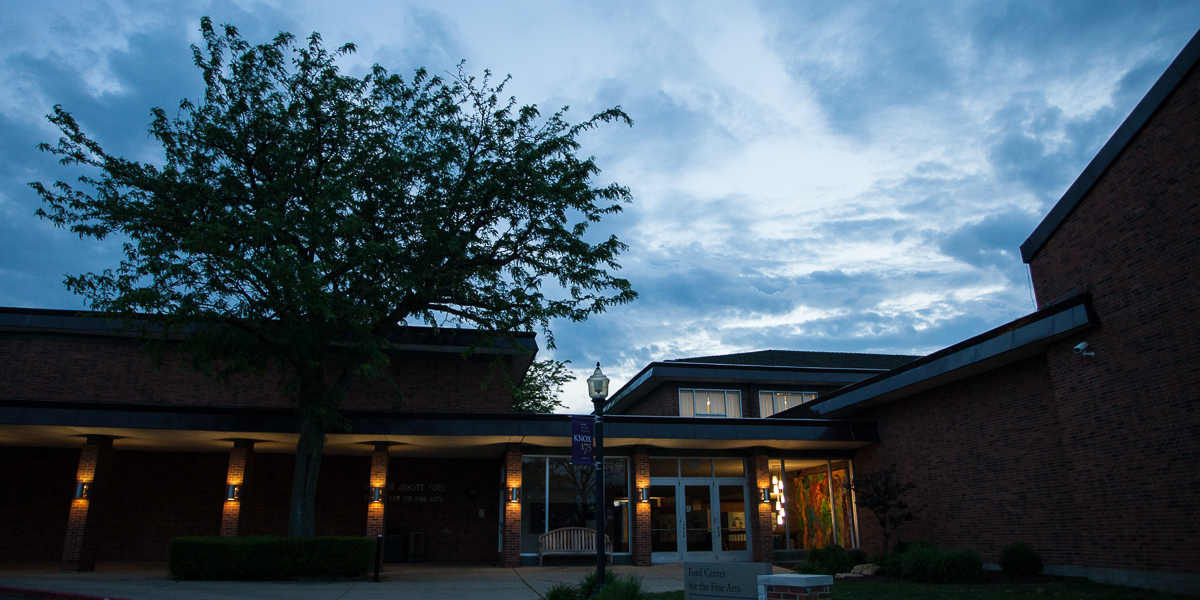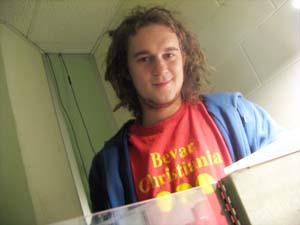

Venture Boldly

Office of Communications
2 East South Street
Galesburg, IL 61401

Cracking the books. All college students do it. It is not like it is brain surgery. Well actually in this case it is.
Performing brain surgery on rats sounds normal for a neuroscience study. But what may seem uncommon is this brain surgery is taking place in a lab at Knox College. The man with the scalpel is undergraduate senior Andy Arnold.
Arnold, who graduates in June, is pursuing a degree in neuroscience. He says that after reading a neuroscience research study conducted at the University of Southern California, he had an idea for a study of his own.
The USC study found that cigarette smokers who had suffered strokes with damage restricted to the part of the brain known as the insula stopped smoking and did not crave cigarettes after they recovered. In addition to potentially driving cravings, the insula plays a role with cravings such as hunger and sex. ?It really shows you when something is out of whack in the body; the insula tries to fix it. It assigns an emotional valence to bodily states,? Arnold says.
Arnold emailed his idea for a study to the principal investigator of the USC study. ?I wanted to see if anyone had done a rat study on this theory. The investigator was ?intrigued,?? Arnold says and added that Arnold should persevere in his own study.
It was a no-brainer. With funding from a Ford Fellowship, Arnold set out to prove his theory. Addiction is a three stage process: increased intake of a substance, followed by withdrawal symptoms upon deprivation and signs of craving and potential relapse.
First, Arnold had to get the rats addicted to cocaine. The lab is peppered with ?Skinner boxes? used for instrumental conditioning, where the rats learned to press a lever to acquire oral cocaine water.
The second step involves Pavlovian conditioning to associate the subjective effects of cocaine with a lemon scent. He also exposed the rats to a peppermint scent not associated with the drug as a control.
After this instrumental and Pavlovian conditioning, comes the surgery. The surgery involves lesioning the anterior (front) part of the insula in the brain and then allowing the rats to recuperate. ?We perform surgery on all the rats, even the control group,? Arnold says.
After about one week of rest and recovery, the rats spend another five days on reminder association exercises, reintroducing them to the lever-cocaine contingency and the scent associations. Then comes the final test, measuring how exposure to each scent affects their drug-seeking behavior, with or without an insula. From his research Arnold believes he has found that the insula is a new target for understanding how drugs affect the brain and, further down the road, a potential site for clinical intervention for addicted individuals.
?Prior to the USC study, hardly anyone thought the insula was associated with driving cravings,? Arnold says.
A self-described lab rat, Arnold started at Knox as a pre-med student. He credits his humanities (painting, poetry, music) classes as critical to his growth. ?Indeed, they do inform my scientific practice with fresh perspectives. They help to keep me honest as a scientist,? he says.
Arnold plans on attending graduate school in neuroscience and conducting his own research and teaching. ?I started out as a psychology major and with the recent development of the neuroscience program at Knox, and help from professors like Heather Hoffmann and Esther Penick, I feel confident in neuroscience. I like studying who we are and how we work,? Arnold says. ?Research is so collaborative, so hands on.?

Andy Arnold '08 is performing brain surgery on lab rats as he works toward his degree in neuroscience.
Published on April 10, 2008